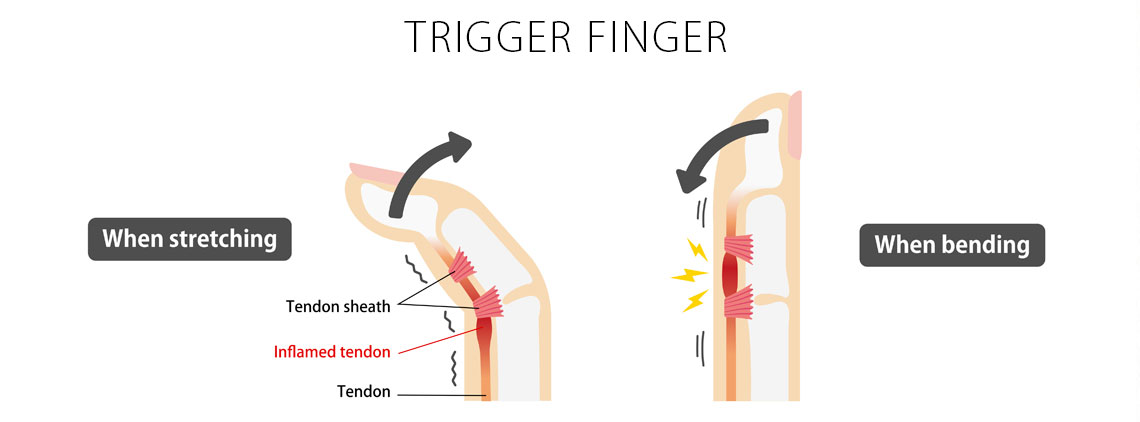
Trigger Finger
Overview
If you have a trigger finger or “Stenosing Tenosynovitis” then the pain, stiffness, and the sensation of locking when you try to bend or straighten your finger isn’t new to you. This condition may have begun with a tender lump on the base of the finger on the palm side of your hand. The ring and thumb fingers are most often affected. When the thumb is affected it’s called the trigger thumb.
Finger Anatomy
Our fingers have a tendon which is a long cord structure whose purpose is to attach the muscles of the forearm to the bones of the finger. These tendons allow the finger to bend, and pass through a tunnel called the “tendon sheath” which allows the finger to bend and straighten smoothly. Along the tendon sheath, there are “pulleys” which are made up of bands of tissue. These pulleys hold the tendon close to the finger bone. The pulley closest to the base of the finger is the “A1 pulley.” This pulley is most often involved in the trigger finger.
When your A1 pulley is affected it thickens or becomes inflamed, making it harder for the tendon to glide through it as the finger bends. The more prolonged inflammation may cause a small nodule to develop. As the finger tries to flex the expanded/inflamed nodule passes through the pulley which causes the locking or catching sensation. This locking sensation is generally excruciatingly painful. Some patients will use their other hand to straighten the finger. The true cause of trigger finger is unknown however, there are two factors that increase your chances of developing this condition.
- Medical Conditions.If you have diabetes or rheumatoid arthritis you may be at an increased risk of developing a trigger finger.
- Forceful Hand Activities. If you work in an industry where you are constantly using your hands or activities that use your hands, you are at an increased risk of developing a trigger finger.
Nonsurgical Treatment Options for Trigger Finger
There are several nonsurgical treatment options:
- Rest . Rest your hand and avoid activities that cause pain. This may provide enough time for it to resolve on its own.
- Splinting. Wearing a splint at night keeps the finger in a straight position.
- Exercises. Exercises decrease stiffness and improve your range of motion.
- Anti-inflammatory Medication. . An anti-inflammatory like ibuprofen or naproxen can relieve inflammation and pain.
- Steroid Injection. If the options above don’t work for you, a steroid injection, stronger anti-inflammatory, can be injected directly into the tendon sheath located at the base of the finger. You can see results as early as the next day or several weeks. You may need an additional shot however if those two shots don’t work you may need to consider surgery.

